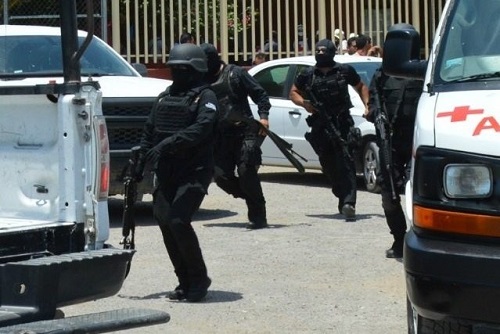FB photo
By
Ricardo Swire
Mexico’s internal security apparatus has uncovered that Juan Manuel Hernandez Palafox, the Deputy Director of Airports Supervision is linked to drug trafficking and organized criminal organizations. A recent report highlighted how the senior aviation executive facilitated uninterrupted drug shipment passages via airports in Mexico City, Cancun, Guadalajara and Tijuana. His office exercises oversight and control of the airports’ customs agents, canines, baggage handlers and security personnel.
In September 2009, while serving as Commander of Mexico’s Federal Police, the Deputy Director was prosecuted with Los Zetas Cartel members for organized crime charges. He was exonerated the following year. The leaked internal security report described how Mexico’s Deputy Director of Airports Supervision teamed up with domestic, Colombian, Peruvian and Venezuela drug trafficking syndicates to smuggle heroin and cocaine through select Mexican airports.
Other internal security data, plus Mexican Federal Police intelligence reports, confirmed several Mexican airports are unofficial domiciles for Sinaloa Cartel, Jalisco New Generation Cartel and Beltran Leyva Cartel trafficking networks. News and media highlights about enforcement operations and seizures often only reflect a fraction of the total drugs and cash channeled via commercial flights and airport terminals daily.
The Cartels, with more than twenty years’ experience in Mexican airport drugs and money trafficking, often sacrifice a small shipment as decoy to guarantee large consignments clear security undetected. Evidence framed Mexico City International Airport as the local drug trafficking focal point. Between 2007 and 2016 a minimum two hundred and fifty-six packages of cocaine, heroin, crystal meth, ephedrine, fentanyl and pseudoephedrine were seized at the airport.
Mexican Federal Police enforcement missions intercepted traffickers commuting aboard Iberia, Volaris, Copa Airlines, Air France, Aeromexico and Mexicana de Aviacion. Such diverse air routes make Mexico City International Airport the most popular Central and South American bridge to the US and Europe. The Federal Police and Attorney General’s Office (PGR) regard flights arriving from Colombia, Costa Rica, El Salvador, Peru, Panama, Spain and US as “high-risk.”
In March 2016 a female passenger was intercepted at Cancun International Airport. She attempted to transport three kilos of cocaine, hidden in a false bottom suitcase. During October 2018 Federal Police arrested a female drug mule, at Guadalajara International Airport, carrying forty-one cocaine pellets in her stomach. In February 2019 a female passenger, arriving at the same airport, was found to have swallowed twenty-two cocaine capsules. At Tijuana International Airport Federal Police confiscated nine kilos of crystal meth hidden in two wooden crosses.
Ricardo Swire
Ricardo Swire is the Principal Consultant at R-L-H Security Consultants & Business Support Services and writes on a number of important issues.



No Comments Yet!
You can be first to comment this post!